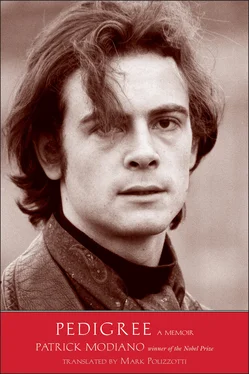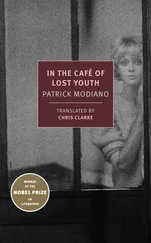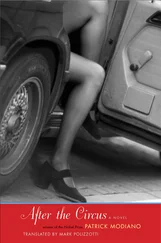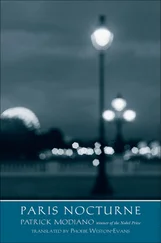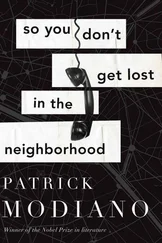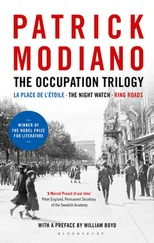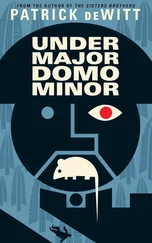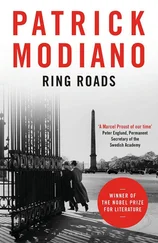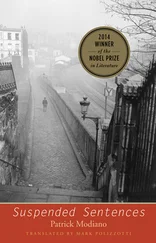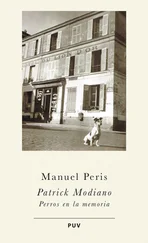An incident, from 1965 or ’66: It’s ten o’clock at night and I’m alone in the apartment. I hear heavy footsteps upstairs, at my father’s, and the crash of furniture being knocked over and windows being smashed. Then silence. I open the door to the landing. Coming from the fourth floor, two stocky fellows who look like thugs or plainclothes cops hurtle down the stairs. I ask them what’s going on. One of them makes an authoritarian gesture and tells me sharply to “go back inside.” I hear footfalls in my father’s apartment. So he was there … I’m tempted to phone him, but we haven’t seen each other since our trip to Bordeaux, and I’m certain he’ll hang up. Two years later, I ask him what happened that night. He claims not to know what I’m talking about. I believe that man could have worn down ten examining magistrates.
That autumn of 1965, on evenings when I had a few five-franc bills bearing the likeness of Victor Hugo, I patronized a restaurant near the Lutèce theater. And I hid out in a room on Avenue Félix-Faure in the 15th arrondissement, where a friend was storing a ten-year collection of Paris-Turf: he used them to make arcane statistical calculations for his bets at Auteuil and Longchamp. Pie in the sky. And yet I remember finding my bearings in that Grenelle neighborhood, thanks to those razor-straight backstreets that flowed down to the Seine. Sometimes I’d take a taxi very late at night. The ride cost five francs. At the edge of the 15th arrondissement, the police often checked for minors. I had altered the birthdate on my passport to give myself legal age, transforming 1945 into 1943.
Raymond Queneau was kind enough to receive me on Saturdays. Often, at the beginning of the afternoon, we’d return from Neuilly along the Left Bank. He told me of a walk he had taken with Boris Vian to a dead-end street that almost no one knew, at the far end of the 13th arrondissement, between the Quai de la Gare and the Austerlitz train tracks: Rue de la Croix-Jarry. He recommended I go there. I’ve read that the times Queneau was happiest were when he wandered around in the afternoon, thinking up his articles about Paris for L’Intransigeant. I wonder whether those dead years that I’m invoking here are worth it. Like Queneau, I was really myself only when I could be alone in the streets, seeking out curiosities like the Asnières dog cemetery. I had two dogs at the time. Their names were Jacques and Paul. In Jouy-en-Josas, in 1952, my brother and I had a dog called Peggy, who got run over one afternoon on Rue du Docteur-Kurzenne. Queneau was very fond of dogs.
He told me of a western that depicted a fierce battle between the Indians and the Basques. The presence of Basques had struck him as very odd and very funny. I finally tracked down the film: it’s called Thunder in the Sun. The synopsis indeed says that it’s about Indians versus Basques. I’d like to see this film in memory of Queneau, in a revival house they’ve forgotten to tear down, in some obscure corner of the city. Queneau’s laugh. Part geyser, part rattle. But I have no talent for metaphor. It was simply Queneau’s laugh.
Nineteen sixty-six. One evening in January, Quai de Conti. Jean Normand comes home around eleven o’clock. I’m alone with him in the apartment. The radio is on. They announce the suicide of Georges Figon in a studio on Rue des Renaudes, just as the police were breaking down the door. He was a protagonist in the Ben Barka Affair. Normand turns pale and makes a phone call, reads someone the riot act, quickly hangs up. He explains that he and Figon had had dinner together not an hour before and that Figon was an old friend, since their school days at the Collège Sainte-Barbe. He doesn’t tell me that they had served time together in Poissy, as I found out later.
And minor events slip by, slide off you without leaving much trace. You feel as if you can’t yet live your real life, as if you’re a stowaway. Of that fraudulent existence, I still recall a few scraps. At Easter, I came across a magazine article concerning Jean Normand and Ben Barka’s murder. The article was headlined: “Why haven’t they questioned this man?” A large photo of Normand, with the caption: “He has hatchet features that look like they were cut with a jackhammer. His name is Normand, but he goes by Duval. Figon called him ‘the tall man with the Jag.’ Normand, or Duval, had known Georges Figon for years …”
That spring, I sometimes stayed at the home of Marjane L. on Rue du Regard. Her apartment was the meeting place for a gang of individuals who circulated aimlessly among Saint-Germain-des-Prés, Montparnasse, and Belgium. Some, who had already discovered psychedelia, used it as a stopover between trips to Ibiza. But one might also run into a certain Pierre Duvelz (or Duveltz): blond, mid-thirties, mustache, and glen plaid suits. He spoke French with a distinguished, international accent, displayed military decorations on his lapel, and claimed to have been in officer candidate school at Saint-Maixent and married to a “Guinness heiress.” He placed phone calls to embassies. He was often with a moronic-looking nonentity who doted on him, and he boasted of his love affair with an Iranian woman.
Other shadows, among them a certain Gérard Marciano. And so many more besides, whom I’ve forgotten and who must have died since then, violently.
That spring of 1966 in Paris, I felt a change in the atmosphere, a variation in climate that I had already sensed in 1958, at age thirteen, and again at the end of the Algerian War. But this time, there was no major event occurring in France, no tipping point — or else I’ve forgotten. Moreover, to my shame, I couldn’t tell you what was happening in the world in April 1966. We were emerging from a tunnel, but as for what tunnel it was, I haven’t a clue. And that breath of fresh air was something we hadn’t experienced in previous seasons. Was it merely the illusion of twenty-year-olds who always think the world began with them? The air felt lighter to me that spring.
Following the Ben Barka Affair, Jean Normand stopped living at Quai de Conti and vanished mysteriously. Around May or June, I was summoned by the vice squad and told to report to an Inspector Langlais. He questioned me for three solid hours in one of their offices, amid cops coming and going, and typed up my answers. To my amazement, he told me that someone had accused me of being a drug user and dealer, and he showed me a mug shot of Gérard Marciano, whom I’d met once or twice on Rue du Regard. My name was apparently in his address book. I said I didn’t know him. The inspector made me show him my arms to check for needle tracks. He threatened to search Quai de Conti and Avenue Félix-Faure, but apparently he didn’t know about Rue du Regard — which surprised me, since the abovementioned Gérard Marciano used to frequent that apartment. He let me go, warning that I might have to come back for more questions. Sadly, they never ask you the right ones.
I alerted Marjane L. about the vice squad and Gérard Marciano, who never showed his face again. Pierre Duvelz, for his part, got himself arrested a few days later in a gun shop, while trying to buy or sell a revolver. Duvelz was a crook, with an arrest warrant out for him. And I committed a bad deed: I stole Duvelz’s wardrobe, which had remained behind at Marjane L.’s and contained some very elegant suits, and I swiped an antique music box belonging to the owners of the apartment Marjane L. was renting. I found a secondhand goods dealer on Rue des Jardins-Saint-Paul and sold him the lot for five hundred francs. He told me he came from a family of scrap merchants in Clichy and that he’d been tight with Joseph Joinovici. If I had any other items to get rid of, just call. He gave me an extra hundred francs, evidently moved by my shyness. The following year, I would make restitution for that bad deed. I used my first author’s royalties to repay the theft of the music box. I would gladly have bought Duvelz a few suits, but I never heard from him again.
Читать дальше
